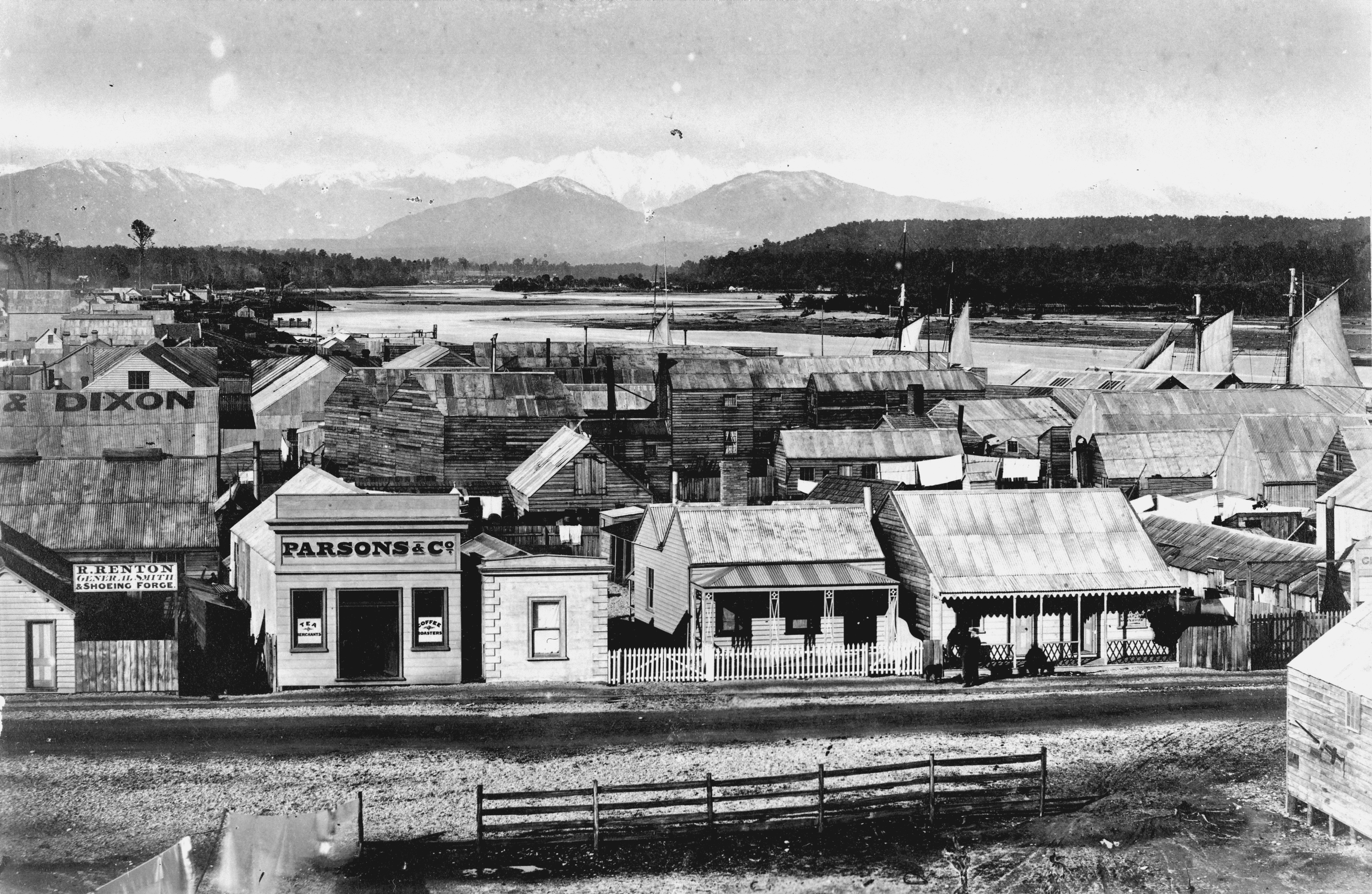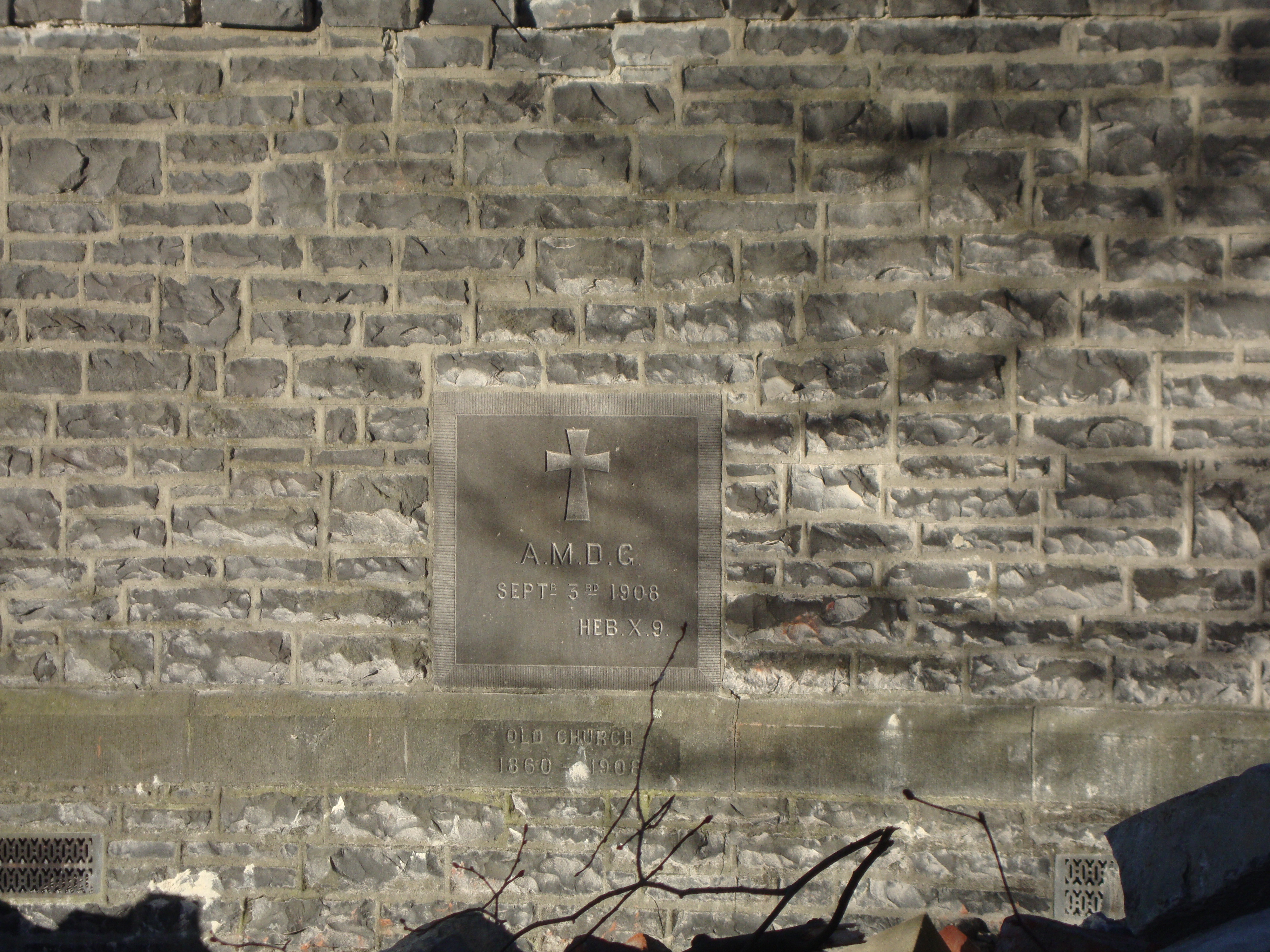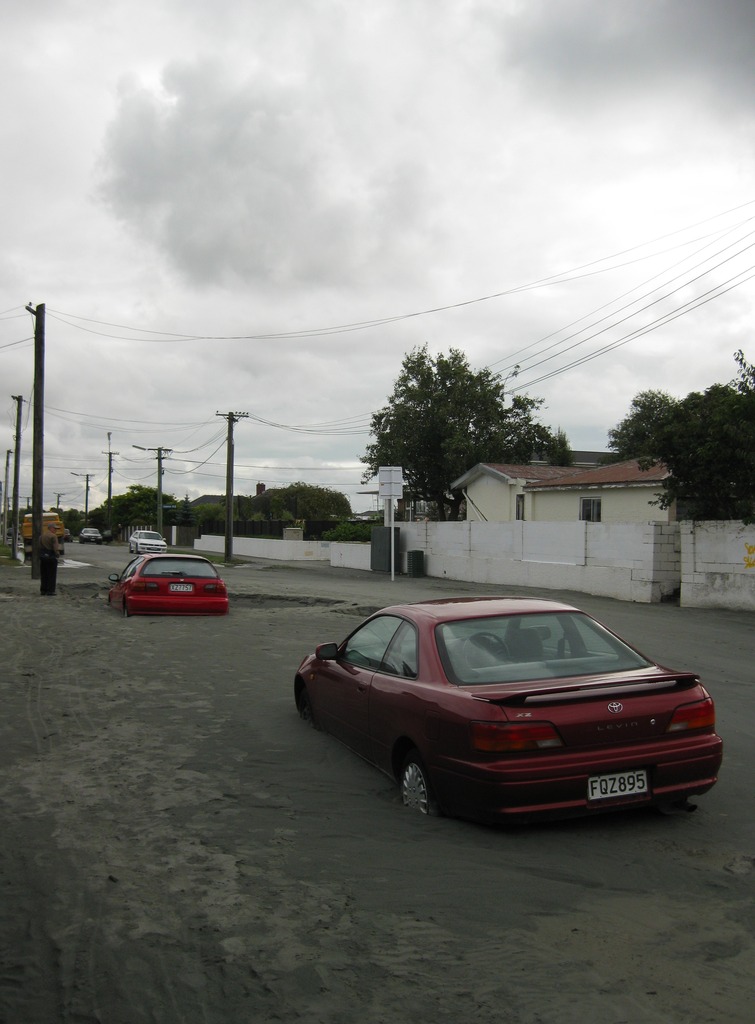|
George Weston (lawyer)
George Thorngate Weston (21 October 1876 – 19 September 1957) was a New Zealand lawyer and cricketer. Weston was born on 21 October 1876 in Hokitika. The publisher Walter Weston was his twin brother. The judge Thomas S. Weston was their father. Thomas Shailer Weston Jr. and Claude Weston were brothers, and Agnes Weston was his sister-in-law. Weston received his education in Christchurch at Christ's College and Canterbury College. He graduated from the university with a bachelor of art in 1897 and a bachelor of laws in 1898. In the same year, he was admitted to the bar by Justice Edward Conolly. Weston played in four first-class matches for Canterbury from 1903 to 1905. Weston was a lecturer in law at his alma mater from 1902 to 1906. He served on the board of governors of Canterbury College from 1907 to 1916. In 1919, he was elected fellow of Christ's College. In 1917 and 1918, he was lieutenant in World War I. He was a prominent lawyer in Christchurch, where he ... [...More Info...] [...Related Items...] OR: [Wikipedia] [Google] [Baidu] |
Hokitika
Hokitika is a town in the West Coast region of New Zealand's South Island, south of Greymouth, and close to the mouth of the Hokitika River. It is the seat and largest town in the Westland District. The town's estimated population is as of . On a clear day Aoraki / Mount Cook can clearly be seen from Hokitika's main street. Toponymy The name Hokitika translates from Māori as "to return directly" (from , 'to return', and , 'direct'). According to the Ministry for Culture and Heritage, the name comes from when a band of Ngāi Tahu warriors in search of greenstone were about to attack Ngāti Wairangi . The chief of the invaders drowned while trying to cross the Hokitika River, and the leaderless (army) then returned directly to their own home. History The land where Hokitika stands was purchased in 1860 from Māori when Poutini Ngāi Tahu chiefs signed the Arahura Deed. This was the sale of the whole of the West Coast region, apart from small areas reserved for ... [...More Info...] [...Related Items...] OR: [Wikipedia] [Google] [Baidu] |
Department Of Internal Affairs (New Zealand)
The Department of Internal Affairs (DIA), or in te reo Māori, is the public service department of New Zealand charged with issuing passports; administering applications for citizenship and lottery grants; enforcing censorship and gambling laws; registering births, deaths, marriages and civil unions; supplying support services to ministers; and advising the government on a range of relevant policies and issues. Other services provided by the department include a translation service, publication of the ''New Zealand Gazette'' (the official government newspaper), a flag hire service, management of VIP visits to New Zealand, running the Lake Taupō harbourmaster's office (under a special agreement with the local iwi) and the administration of offshore islands. History The Department of Internal Affairs traces its roots back to the Colonial Secretary's Office, which from the time New Zealand became a British colony, in 1840, was responsible for almost all central government dut ... [...More Info...] [...Related Items...] OR: [Wikipedia] [Google] [Baidu] |
1876 Births
Events January–March * January 1 ** The Reichsbank opens in Berlin. ** The Bass Brewery Red Triangle becomes the world's first registered trademark symbol. * February 2 – The National League of Professional Base Ball Clubs is formed at a meeting in Chicago; it replaces the National Association of Professional Base Ball Players. Morgan Bulkeley of the Hartford Dark Blues is selected as the league's first president. * February 2 – Third Carlist War – Battle of Montejurra: The new commander General Fernando Primo de Rivera marches on the remaining Carlist stronghold at Estella, where he meets a force of about 1,600 men under General Carlos Calderón, at nearby Montejurra. After a courageous and costly defence, Calderón is forced to withdraw. * February 14 – Alexander Graham Bell applies for a patent for the telephone, as does Elisha Gray. * February 19 – Third Carlist War: Government troops under General Primo de Rivera drive through the ... [...More Info...] [...Related Items...] OR: [Wikipedia] [Google] [Baidu] |
List Of Canterbury Representative Cricketers
This is a list of all male cricketers who have played first-class, list A or Twenty20 cricket for Canterbury men's cricket team. CricketArchive. Retrieved 21 July 2020. Seasons given are the first and last seasons the player played for the side. Players did not necessarily play for Canterbury in all of the intervening seasons. A B C D E * Warren Eddington, 1977/78–1984/85 * Henry Edser, 1881/82–1883/84 *[...More Info...] [...Related Items...] OR: [Wikipedia] [Google] [Baidu] |
Queen Elizabeth II Coronation Medal
The Queen Elizabeth II Coronation Medal (french: link=no, Médaille du couronnement de la Reine Élizabeth II) is a commemorative medal instituted to celebrate the coronation of Queen Elizabeth II on 2 June 1953. Award This medal was awarded as a personal souvenir from the Queen to members of the Royal Family and selected officers of state, members of the Royal Household, government officials, mayors, public servants, local government officials, members of the navy, army, air force and police in Britain, her colonies and Dominions. It was also awarded to members of the Mount Everest expedition, two of whom reached the summit four days before the coronation. It was struck at the Royal Mint and issued immediately after the coronation. For Coronation and Jubilee medals, the practice up until 1977 was that the authorities in the United Kingdom decided on a total number to be produced, then allocated a proportion to each of the Commonwealth countries and Crown dependencies and o ... [...More Info...] [...Related Items...] OR: [Wikipedia] [Google] [Baidu] |
St Luke's Church, Christchurch
St Luke's Church in Christchurch was registered as a Category II historic place with the New Zealand Historic Places Trust. Built on one of the five sites set aside in the central city in the original survey of Christchurch for the Anglican church, it was demolished in July 2011 following damage sustained in the February 2011 Christchurch earthquake. History The site bounded by Manchester, Lichfield and Peterborough Streets was one of five sites set aside by the Canterbury Association in the original survey of Christchurch, which was carried out during 1850. A church, the Chapel of Ease, was built on the site between 1858 and 1860. After St Michael and All Angels, it was the second Anglican church in Christchurch. The result was described as "ugly and barn-like". This first church had a frontage onto Peterborough Street, and it was extended in 1871 based on a design by Benjamin Mountfort. The Chapel of Ease was demolished in 1908. St Luke's was designed by Cyril Mountfort, th ... [...More Info...] [...Related Items...] OR: [Wikipedia] [Google] [Baidu] |
2011 Christchurch Earthquake
A major earthquake occurred in Christchurch on Tuesday 22 February 2011 at 12:51 p.m. local time (23:51 UTC, 21 February). The () earthquake struck the entire of the Canterbury region in the South Island, centred south-east of the central business district. It caused widespread damage across Christchurch, killing 185 people, in New Zealand's fifth-deadliest disaster. Christchurch's central city and eastern suburbs were badly affected, with damage to buildings and infrastructure already weakened by the magnitude 7.1 Canterbury earthquake of 4 September 2010 and its aftershocks. Significant liquefaction affected the eastern suburbs, producing around 400,000 tonnes of silt. The earthquake was felt across the South Island and parts of the lower and central North Island. While the initial quake only lasted for approximately 10 seconds, the damage was severe because of the location and shallowness of the earthquake's focus in relation to Christchurch as well as ... [...More Info...] [...Related Items...] OR: [Wikipedia] [Google] [Baidu] |
Heritage New Zealand
Heritage New Zealand Pouhere Taonga (initially the National Historic Places Trust and then, from 1963 to 2014, the New Zealand Historic Places Trust) ( mi, Pouhere Taonga) is a Crown entity with a membership of around 20,000 people that advocates for the protection of ancestral sites and heritage buildings in New Zealand. It was set up through the Historic Places Act 1954 with a mission to "...promote the identification, protection, preservation and conservation of the historical and cultural heritage of New Zealand" and is an autonomous Crown entity. Its current enabling legislation is the Heritage New Zealand Pouhere Taonga Act 2014. History Charles Bathurst, 1st Viscount Bledisloe gifted the site where the Treaty of Waitangi was signed to the nation in 1932. The subsequent administration through the Waitangi Trust is sometimes seen as the beginning of formal heritage protection in New Zealand. Public discussion about heritage protection occurred in 1940 in conjunction with t ... [...More Info...] [...Related Items...] OR: [Wikipedia] [Google] [Baidu] |
Weston House
Weston House was a substantial two-storey heritage building in Christchurch, New Zealand, designed by architect Cecil Wood (architect), Cecil Wood in Georgian_architecture#Post-Georgian_developments, Neo-Georgian style for George Weston (lawyer), George Weston, and completed in 1924. Registered as a Category I heritage building since 1983, it was demolished after the 2011 Christchurch earthquake. George Weston George Weston (1876–1957) was a prominent lawyer in Christchurch. His father, Thomas S. Weston (1836–1912), was a judge and took the unusual step of resigning and rejoining the bar, setting up the practice of T. S. Weston and Co in Christchurch in 1883. George Weston was admitted to the bar in 1898 and his father took him into partnership in 1901 when he returned to Christchurch, with the firm then known as T. S. Weston and son. Weston Sr. died in 1912 and, after having served in World War I, George Weston took Robert B. Ward into partnership in September 1919, with ... [...More Info...] [...Related Items...] OR: [Wikipedia] [Google] [Baidu] |
Cecil Wood (architect)
Cecil Walter Wood (6 June 1878 – 28 November 1947) was a New Zealand architect. He was the dominant architect in Canterbury, New Zealand, Canterbury during the interwar period. Early life Wood was born in Christchurch, New Zealand in 1878. At his birth, the family lived in Cashel Street West near Antigua Street. His father, Robert Wood, was a timber merchant and later a Christchurch City Council, Christchurch City councillor (1889–1895). His mother was Margaret Amelia (Amy) . His parents had married in 1865 and Cecil was their sixth child. Shortly after childbirth, his mother died on 27 September 1885 (the infant daughter had died two days prior); Cecil was seven at that time and affected by his mother's death. His eldest sister Amy was subsequently in charge of the younger siblings until his father remarried—to Elizabeth Anne —when Cecil was 13. The Wood children did not welcome their new mother and Cecil felt loneliness and resentment, to both his father and his stepmo ... [...More Info...] [...Related Items...] OR: [Wikipedia] [Google] [Baidu] |
Freemason
Freemasonry or Masonry refers to fraternal organisations that trace their origins to the local guilds of stonemasons that, from the end of the 13th century, regulated the qualifications of stonemasons and their interaction with authorities and clients. Modern Freemasonry broadly consists of two main recognition groups: * Regular Freemasonry insists that a volume of scripture be open in a working lodge, that every member profess belief in a Supreme Being, that no women be admitted, and that the discussion of religion and politics be banned. * Continental Freemasonry consists of the jurisdictions that have removed some, or all, of these restrictions. The basic, local organisational unit of Freemasonry is the Lodge. These private Lodges are usually supervised at the regional level (usually coterminous with a state, province, or national border) by a Grand Lodge or Grand Orient. There is no international, worldwide Grand Lodge that supervises all of Freemasonry; each Grand ... [...More Info...] [...Related Items...] OR: [Wikipedia] [Google] [Baidu] |
First-class Cricket
First-class cricket, along with List A cricket and Twenty20 cricket, is one of the highest-standard forms of cricket. A first-class match is one of three or more days' scheduled duration between two sides of eleven players each and is officially adjudged to be worthy of the status by virtue of the standard of the competing teams. Matches must allow for the teams to play two innings each, although in practice a team might play only one innings or none at all. The etymology of "first-class cricket" is unknown, but it was used loosely before it acquired official status in 1895, following a meeting of leading English clubs. At a meeting of the Imperial Cricket Conference (ICC) in 1947, it was formally defined on a global basis. A significant omission of the ICC ruling was any attempt to define first-class cricket retrospectively. That has left historians, and especially statisticians, with the problem of how to categorise earlier matches, especially those played in Great Britain b ... [...More Info...] [...Related Items...] OR: [Wikipedia] [Google] [Baidu] |


.jpg)


